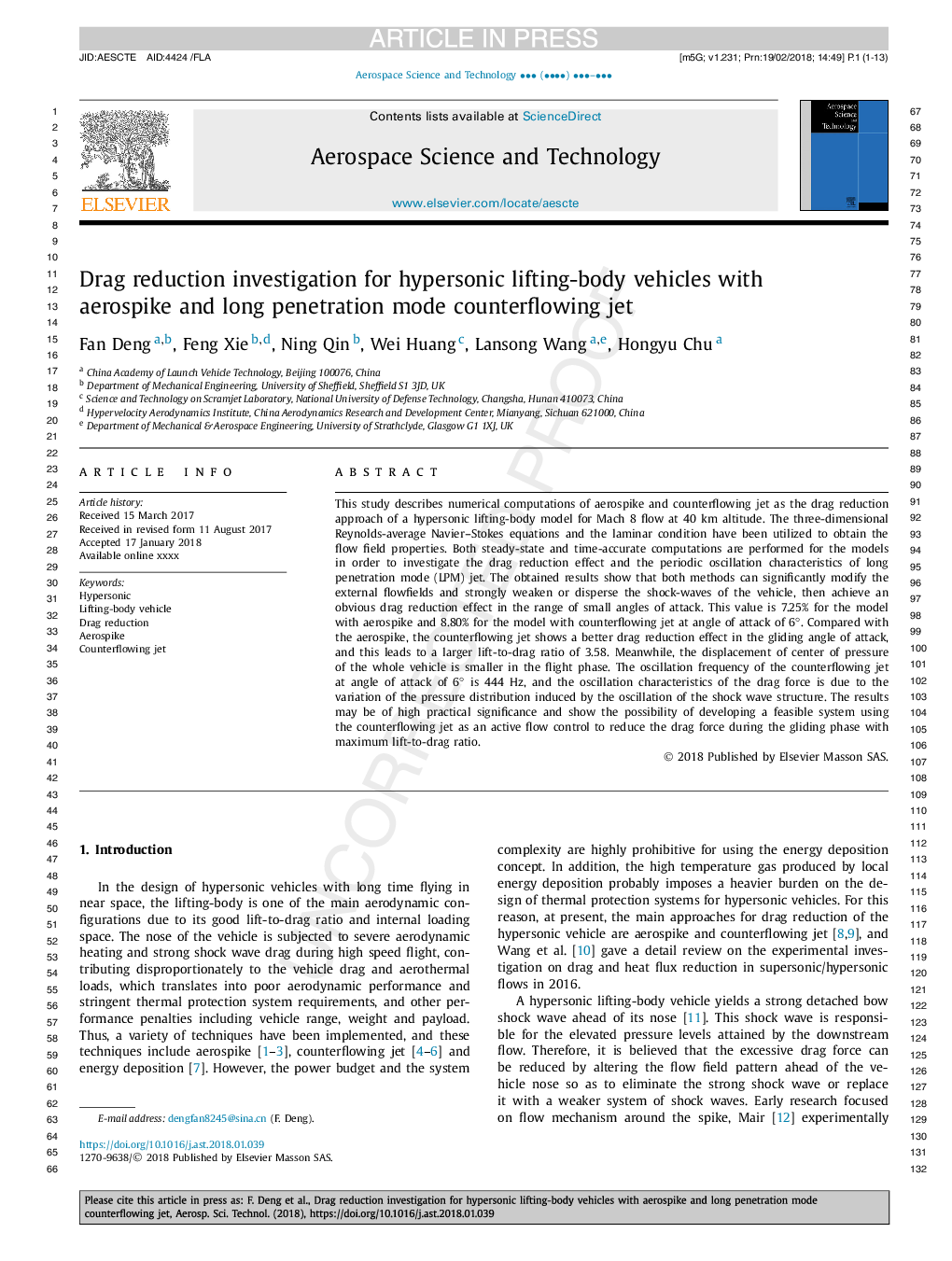| Article ID | Journal | Published Year | Pages | File Type |
|---|---|---|---|---|
| 8057904 | Aerospace Science and Technology | 2018 | 13 Pages |
Abstract
This study describes numerical computations of aerospike and counterflowing jet as the drag reduction approach of a hypersonic lifting-body model for Mach 8 flow at 40 km altitude. The three-dimensional Reynolds-average Navier-Stokes equations and the laminar condition have been utilized to obtain the flow field properties. Both steady-state and time-accurate computations are performed for the models in order to investigate the drag reduction effect and the periodic oscillation characteristics of long penetration mode (LPM) jet. The obtained results show that both methods can significantly modify the external flowfields and strongly weaken or disperse the shock-waves of the vehicle, then achieve an obvious drag reduction effect in the range of small angles of attack. This value is 7.25% for the model with aerospike and 8.80% for the model with counterflowing jet at angle of attack of 6°. Compared with the aerospike, the counterflowing jet shows a better drag reduction effect in the gliding angle of attack, and this leads to a larger lift-to-drag ratio of 3.58. Meanwhile, the displacement of center of pressure of the whole vehicle is smaller in the flight phase. The oscillation frequency of the counterflowing jet at angle of attack of 6° is 444 Hz, and the oscillation characteristics of the drag force is due to the variation of the pressure distribution induced by the oscillation of the shock wave structure. The results may be of high practical significance and show the possibility of developing a feasible system using the counterflowing jet as an active flow control to reduce the drag force during the gliding phase with maximum lift-to-drag ratio.
Related Topics
Physical Sciences and Engineering
Engineering
Aerospace Engineering
Authors
Fan Deng, Feng Xie, Ning Qin, Wei Huang, Lansong Wang, Hongyu Chu,
